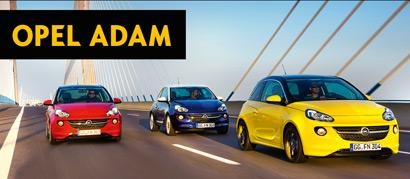
General Motors is making profound changes and not just in executive nameplates. Starting in two years the automaker will focus on its Opel and Vauxhall brands for the
European market, while Chevrolet — the fourth-largest global auto brand — will vanish there.
In Europe, the company will go
back to its traditional strategy of making its icon cars (like Corvette) available in Western and Eastern Europe, and a larger lineup only in Russia and the Commonwealth of Independent
States.
The company says taking Chevrolet out of Europe will "reduce the market complexity associated with having Opel and Chevrolet in
Western and Eastern Europe. In Russia and the CIS, the brands are clearly defined and distinguished and, as a result, are more competitive within their respective segments." Instead GM will push to
get a foothold for Cadillac vehicles in Europe.
advertisement
advertisement
“Europe is a key region for GM that will benefit from a stronger Opel and Vauxhall and
further emphasis on Cadillac,” said GM Chairman and CEO Dan Akerson. “For Chevrolet, it will allow us to focus our investments where the opportunity for growth is
greatest.”
The automaker also says that in Australia (and New Zealand) it is transitioning to a national auto sales company, focusing on
the Holden brand because, with the rise in value of the Australian dollar, it is getting too expensive to do business there. GM will shutter vehicle and engine manufacturing, and cut back engineering
operations in Australia by the end of 2017.
A GM spokesperson says this will not affect Chevrolet’s BRIC market strategy. "We continue
with a major presence in key markets, including Mexico, China and Russia." He says Chevrolet had only 1% share in Europe, where “the environment is a challenge and their recovery is very
slow.”
And there’s the seven-year, $600 million deal with the Manchester United soccer team inked in 2012 by former CMO Joel
Ewanick. For the 2014 season, in fact, the Chevrolet bow-tie will appear for the first time on team jerseys. "The team is huge in China and other parts of the world," he says.
David Kiley, auto industry analyst at New Roads Publishing, says GM's issue in Europe is an unsteady hand on the strategy tiller. "They keep changing brand
strategy, and it is stuck with three low-market brands: Chevy, Opel and Vauxhaul in the U.K. Those brands are defined in consumers’ minds. Just because GM changes the brand plans on paper
doesn't mean that the consumers will follow. GM is a mass of confusion in Europe, and Ford and VW are much better defined alternatives for most buyers."
Auto analyst Todd Turner, president of Car Concepts, says it makes sense for Chevrolet to emulate Ford in this case. "They need a global program for all markets. One Ford is
the reason Ford has gotten such efficiency around the world. If they want Chevrolet to be global, they should stay focused on that. They have lots of global vehicle platforms but they aren't taking it
far enough."
As for Cadillac playing on Europe's pitch, “it will be a really big challenge,” says Jim Sanfilippo, auto
industry consultant. “As good as the cars are — and vehicles like ATS and CTS have real life — they are against the Germans on their home field. It will take time, and it will take
focus and serious discipline. They can’t just ‘launch and leave.’ And they are still cracking the U.S. market against those very brands. Cadillac’s in the major leagues but
they have lots of work, proving and authenticity to build. It took Audi years to do that.”